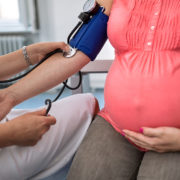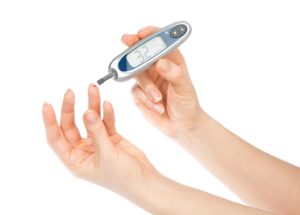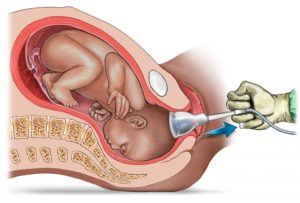The ULTIMATE Hospital Bag Checklist
Have everything ready to go when you’re 8 months pregnant, since you could go into labor at any time in the weeks before your due date. You may want to pack two small bags for the hospital or birth center: one for the items you’ll need during labor, and another for items that you won’t need until after you give birth.
Stay sane on delivery day by preparing your hospital bag ahead of time. Here is our complete list of stuff you won’t want to forget.
LABOR BAG
Smartphone and Charger. A camera or video camera with batteries, charger, and memory card. Someone has to document the big event! Some hospitals don’t allow videotaping of the birth itself, but there’s usually no rule against filming during labor or after the birth. If you plan on using your phone to take photos or video, make sure it’s fully charged and pack your charger. Note: Not all hospitals let you use plugs in the delivery room, so you might want to bring a battery-powered charger or another way to charge your devices that doesn’t require a plug.
Important Documents. Bring copies of your birth plan (if you have one), a picture ID, health insurance information, and hospital registration forms. Even if you’ve already registered at the hospital, some hospitals need to confirm your records before they can admit you.
Your birth plan (if you have one) and your insurance information.
Music. Take your iPod, MP3 player or a CD player and some CDs. Some hospitals provide their own CD players and iPod docks so you may ask what they will have available in your room.
Hair Care Products. If you have long hair, you may want it tied up since it can get in the way during labor. It’s recommended getting the ones that don’t leave a kink in your hair. That way if you want to take pictures with your hair down after the birth, you won’t have a crease in your hair! (Avoid wearing clips in labor. They can poke you!)
Nursing Bra. Bring a nursing tank or bra (buy them at the end of your pregnancy most women are about that same size (postpartum) that’s comfy enough to sleep in.
Sleepwear, Robe, and Underwear. A cotton nightie will be much more comfortable than a hospital gown. A robe will be handy for when you want to walk the hallways. Several pairs of undies are a must (briefs, maternity, or disposables like Depends) if you don’t want to wear the mesh underwear the hospital gives you after
Slippers and/or Heavy Socks. Keep your toes toasty and clean, whether you’re in bed or strolling around on the cold tile floor. Bring a pair that’s easily laundered, as they may get a bit dirty.
Birth Ball. These can really help you during labor. A peanut ball is particularly great for women that are preparing to have an epidural. Highly recommended. Just remember to bring a pump so your birth partner can inflate it for you if you didn’t come with it already inflated.
Lip Balm. Your lips can dry out quickly with all of the deep breathing that you will do in labor. Having some chap stick or lip balm will help.
Snacks and Drinks. First, make sure that your doctor/hospital will allow this. Most of the time they will only allow you to have ice chips when you are at the hospital in labor, but they may have sugar-free Popsicle there for you.
Cash and Change. Bring cash and change for snacks, gift-store runs, and any of your miscellaneous cravings. You not want the hospital food.
Relaxation Tools. A homemade hot pack (a sock filled with rice or beans) can bring you instant relief during active labor because it molds to your body and it can easily be warmed up in the hospital’s microwave. Other items to pack include: back massager, stress-relieving squeeze ball, and massage oil or lotion.
Toiletries. Deodorant, body wash, shampoo, facial cleansing wipes, toothpaste, a toothbrush, and moisturizer are necessities.
Extra clothes for Daddy/Partner. Had some Dad’s/partner’s change their clothes even when their partner is still in labor. They may think the room is too cold so they put on a jacket or a long sleeved shirt or they sweat too much because they’re nervous or working hard too so they need new shirts. Having some extra pairs of clean clothes is good to have on hand.
RECOVERY ROOM BAG 
Homecoming Outfit for You. Here’s a hint: You’ll need loose, comfortable clothes to wear while you’re in the hospital and for the journey home. You’ll probably still look about 5 months pregnant, so skip your non-maternity skinny and pack your favorite maternity dress or leggings and a tunic. (Trust us: Not fitting into your going-home outfit is a bummer!)
Toiletries. Pack a few personal items, such as a toothbrush and toothpaste, lip balm, nursing pads (Bring a couple of packs disposable or washable), deodorant, a brush and comb, makeup, and a hairband or barrettes. Hospitals usually provide soap, shampoo, and lotion, but you might prefer your own.
Snacks. After many hours of labor, you’re likely to be pretty hungry, and you may not want to rely solely on hospital food. So bring your own crackers, fresh or dried fruit, nuts, granola bars, or whatever you think you’ll enjoy. A bottle of non alcoholic champagne might be fun for celebrating, too.
Postpartum underwear or disposable underwear. Don’t bring your nice, cute undies with you. You need big, cotton, breathable underwear. Some people even get Silhouette so they can easily toss them after using them. The hospital will have disposable undies, which some women find handy and others find gross since they are large, stretchy, mesh shorts.
Essentials to pack for your Baby 
Homecoming Outfit for Baby. Pack a newborn-size kimono-style shirt, with footed pants so you don’t have to bring socks. Make sure your baby’s outfit has legs (is not a baby “gown,” for example) so the car seat strap can fit between them.
Car Seat. You can’t drive your baby home without one! Have a rear-facing car seat properly installed ahead of time and know how to buckle your baby in correctly.
Blankets. The hospital will provide blankets for swaddling your baby while you’re there, but you may want to bring your own to tuck around your baby in the car seat for the ride home. Make it a heavy one if the weather’s cold. You may include: Burp cloths, Onesies, Baby hat/Bow, Nappies and Pacifier























